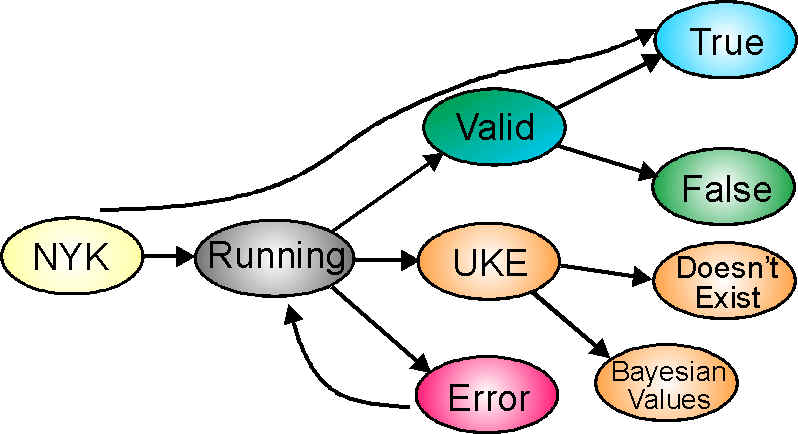
To more adequately describe the logical states that can arise in an active structure, five logical states are used, only four of which can be propagated through the network. The five logical states are:

To more adequately describe the logical states that can arise in an active structure, five
logical states are used, only four of which can be propagated through the network. The
five logical states are:
TRUE EQV FALSE
has a logical state of FALSE.
The FALSE logical state is also used to indicate that numeric, string, list and object variable have alternative values. That is, the variable X in the statement
States except NYK may be tested for in IF...THEN... structures, UKE and ERROR requiring an IDENT function. Bayesian logical values require a BAYES operator to turn them into numbers, or vice versa.
The TWOSTATE function can be used to convert from Orion's five logical states to the states of Boolean logic.